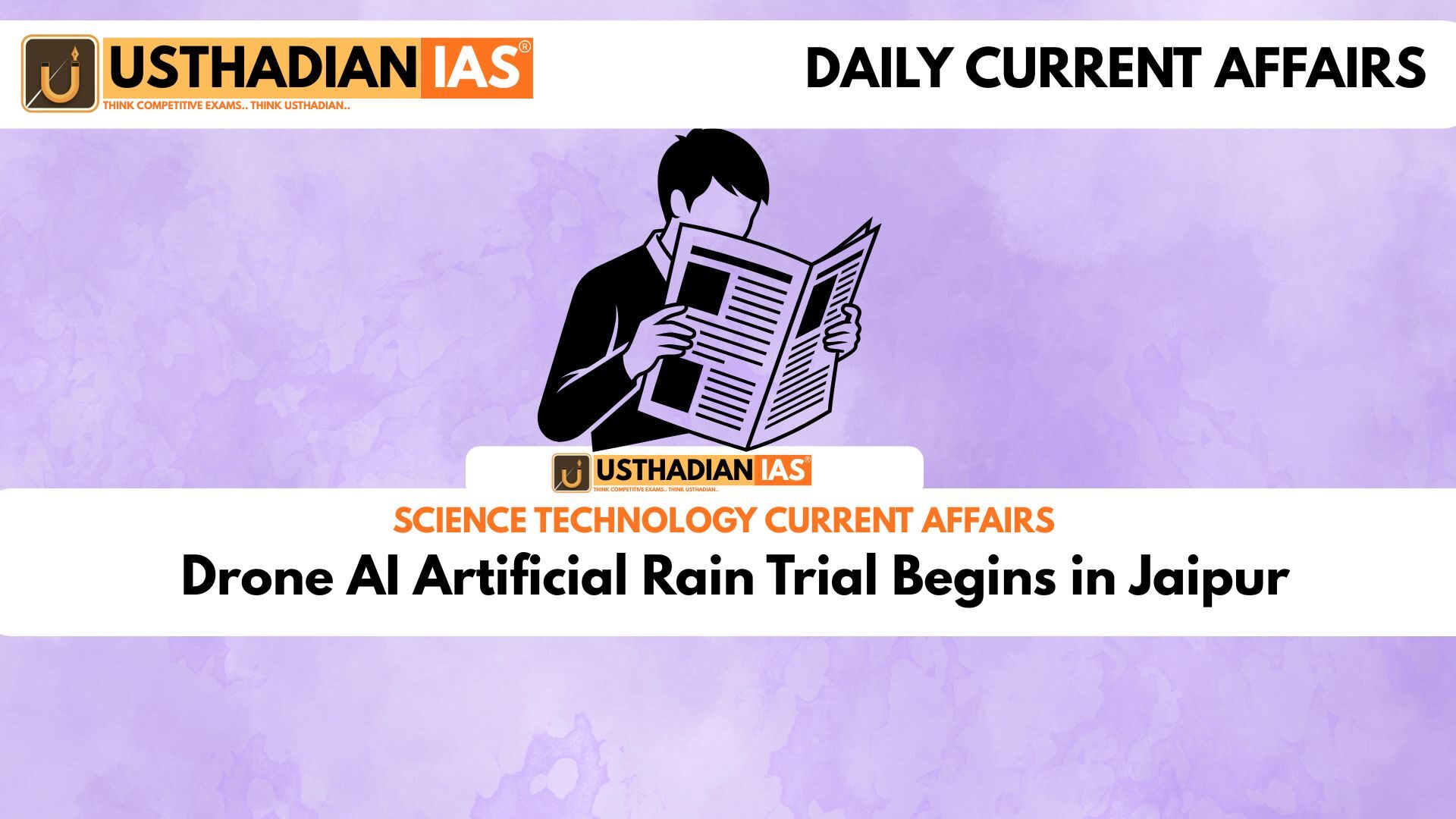Breakthrough in Artificial Rain Technology
Drone AI Artificial Rain Trial Begins in Jaipur: India has launched its first drone-AI-powered cloud seeding experiment at the historic Ramgarh Dam in Jaipur. The initiative aims to trigger artificial rainfall to revive the dam, which has remained dry for over two decades. The Rajasthan Government, in partnership with India-US-based GenX AI, is leading this project to address water scarcity, support agriculture, and restore biodiversity.
Static GK fact: Ramgarh Dam was the venue for the 1982 Asian Games sailing competition.
Project Launch and Participation
The pilot experiment commenced at 2 PM with the presence of Agriculture and Disaster Relief Minister Kirodi Lal Meena. Local residents, officials, and technology experts witnessed the event. The project seeks to ensure sustainable drinking water supply for Jaipur and protect the ecological balance of the dam surroundings.
Why Ramgarh Dam Was Selected
Initially, Mansagar Dam near Jal Mahal was considered, but its smaller size and urban proximity led to the selection of Ramgarh Dam. The site offers larger storage capacity, is currently dry, and holds historical significance.
Static GK fact: The foundation of Ramgarh Dam was laid on 30 December 1897 by Maharaja Madho Singh II, and it was inaugurated for water supply by Viceroy Lord Irwin in 1931.
How Drone-AI Cloud Seeding Works
Cloud seeding involves dispersing chemicals such as sodium chloride into clouds to induce condensation and rainfall. In this experiment, Taiwan-made drones fly at high altitudes to release the compound into selected cloud formations. This method has been successfully applied in the US, Russia, and several European nations for drought relief.
Static GK fact: The Banganga River once fed Ramgarh Dam, making it a key water source for the Jamwaramgarh Wildlife Sanctuary.
Multi-Department Coordination
The project is being carried out with inputs from the Agriculture, Meteorology, Water Resources, Irrigation, and Pollution Control departments. The DGCA has granted official permission for drone operations. Data will be collected over a one-month period to evaluate the results.
Previous Cloud Seeding in Rajasthan and India
Earlier attempts at Ghosunda Dam in Chittorgarh failed due to limited technology. This trial benefits from advanced AI targeting and precision drones. Historically, India’s first cloud seeding was in 1951 over the Western Ghats. Between 1973 and 1986, a long-term program in Baramati, Maharashtra recorded a 24% increase in rainfall.
Significance of the Jaipur Experiment
If successful, this experiment will serve as a model for drought-prone regions across India. It not only highlights India’s capability to integrate AI and drone technology in weather modification but also supports climate resilience and water security.
Static Usthadian Current Affairs Table
Drone AI Artificial Rain Trial Begins in Jaipur:
| Topic | Detail |
| Location of experiment | Ramgarh Dam, Jaipur, Rajasthan |
| Technology used | Drone-AI-powered cloud seeding |
| Main chemical | Sodium chloride |
| Project partners | Rajasthan Government and GenX AI |
| Dam foundation year | 1897 |
| Dam inauguration year | 1931 by Lord Irwin |
| Related river | Banganga River |
| Event hosted in 1982 | Asian Games sailing competition |
| Past cloud seeding attempt in Rajasthan | Ghosunda Dam, Chittorgarh |
| First cloud seeding in India | 1951, Western Ghats |








